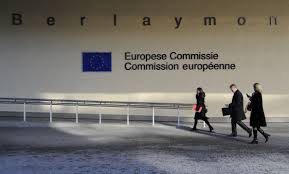European Commission proposes winding up follow-up visits on 2008 loan
 The European Commission (EC) proposed to wind up the follow-up visits related to a loan programme of the EU to Hungary, that ran parallel with an IMF credit in 2008. Hungary drew a total of EUR 5.5bn from the EU in 2008-2009 and repaid more than 70pc of the loan by last November. The last EUR 1.5bn tranche will be due in the second quarter of 2016. On-site visits have been regular since the end of 2010. In report on the last follow-up visit that took place in November 2014 the EC experts concluded that the state of the economy no more necessitates further such visits. While aknowledging the achievements the report noted a still weak growth potential and the continued vulnerability of the banking system. They said that the financing of Hungary’s general government is safely based and the budget responds well to global impacts. The liquidity reserves and international reserves provide a sufficient buffer against eventual disturbances on global markets. The Hungarian economy grows rapidly, partly thanks to a set of one-off measures and incentives, but the general picture has also improved, the report said, adding that domestic demand is the main engine for growth. Hungary’s growth potential is still poor relative to other countries of the region, and is weakened by low growth of productivity, which partly is the result of narrow financial resources. The Hungarian banking system continues to be vulnerable. Last year the banks faced operational problems partly due to the tax burden which is the highest in the EU and partly because the increasing volume of bad and restructured debt weighed on their balances. The report aknowledged, however, that employment exceeds the level before the crisis, inflation has been pushed down, the current account has been in surplus and the fiscal deficit has been below 3pc for years.
The European Commission (EC) proposed to wind up the follow-up visits related to a loan programme of the EU to Hungary, that ran parallel with an IMF credit in 2008. Hungary drew a total of EUR 5.5bn from the EU in 2008-2009 and repaid more than 70pc of the loan by last November. The last EUR 1.5bn tranche will be due in the second quarter of 2016. On-site visits have been regular since the end of 2010. In report on the last follow-up visit that took place in November 2014 the EC experts concluded that the state of the economy no more necessitates further such visits. While aknowledging the achievements the report noted a still weak growth potential and the continued vulnerability of the banking system. They said that the financing of Hungary’s general government is safely based and the budget responds well to global impacts. The liquidity reserves and international reserves provide a sufficient buffer against eventual disturbances on global markets. The Hungarian economy grows rapidly, partly thanks to a set of one-off measures and incentives, but the general picture has also improved, the report said, adding that domestic demand is the main engine for growth. Hungary’s growth potential is still poor relative to other countries of the region, and is weakened by low growth of productivity, which partly is the result of narrow financial resources. The Hungarian banking system continues to be vulnerable. Last year the banks faced operational problems partly due to the tax burden which is the highest in the EU and partly because the increasing volume of bad and restructured debt weighed on their balances. The report aknowledged, however, that employment exceeds the level before the crisis, inflation has been pushed down, the current account has been in surplus and the fiscal deficit has been below 3pc for years.










